Source Codes: The Most Useful Measurement Strategy You May Not Be Using – Guest Post by Laura Quinn
You’re likely using more than one channel to communicate. Email, Facebook, posting to listserves, your website, direct mail—the list goes on and on. How do you know which of those channels is actually driving people to donate, register for an event, or even sign up for your eNewsletter? How do you know what story—across every channel—is doing the best job of driving people to take action?
Enter source codes. I’ve been talking to a lot of nonprofit marketing experts in preparation for our integrated communications class (starting Feb 23rd… but more on that later), and nearly all of them have mentioned how easy and useful it is to source code things, but how surprisingly few nonprofits they talk to are using them.
Here’s how to use source codes, in five easy steps:
- Drive people to take action on a website page. Encourage everyone from every channel to do something (donate, fill out a form, etc.) on a website page you have control over. This means that whether they’re coming from Facebook, email, Twitter, or anywhere else, they’ll go to a central webpage to read more or take action. (This isn’t always practical, especially with direct mail, but give it some thought and prioritize it when you can.)
- Create multiple URLs (website addresses) for that same website page. This is the only slightly technical thing in the process. For each source you want to track to the same page, you’ll need a different URL. Most pages will allow you to do this simply by adding a “?” and then text that describes what you want to track. So for instance, I could type idealware.org?fb and www.idealware.org?en into a browser and they both go to the same webpage. Test it on your site to make sure, but the vast majority of sites just ignore anything that comes after a “?.” If you want more power, check out the Google URL Builder: https://support.google.com/analytics/answer/1033867?hl=en.
- Match each URL to a source you want to track. For instance, send out idealware.org?fb1 in your first Facebook post on a topic, and www.idealware.org?fb2 in the second one. Create as many URLs as you want to differentiate different channels, tactics, or anything else.
- Make sure you know which source code is which. This is actually the hardest part of the process. If you’re tracking a number of sources for a number of different campaigns, create a spreadsheet for your source codes to make sure you know what each is associated with.
- Plan how to know which source code was used. If you’re tracking website analytics with Google Analytics, you can easily use it to see the traffic to each different URL. If you use the Google URL builder, you can include a lot of detail. Or if Google Analytics is a pain for you, you can track the traffic to each page through a shortening tool such as Bit.ly, which shortens each of the separate URLs and then allows you to view the clickthroughs on each.
Source codes won’t solve all of your tracking problems. There will always be some mystery traffic that comes in without a source code. But source codes provide a lot more visibility into the success of various tactics than you will get by going without them.
Want to know more about strategizing, planning, and implementing a solid integrated communications regime? I’m leading a five-part course on integrated communications starting on February 23rd. We’ll look at a number of techniques (including tracking) to help you think holistically about your communications. And I’m joined by a number of marketing superstars known for their strategic and creative savvy, including John Haydon, Michael Silberman, Madeline Stanionis, and others. Read more or register at http://bit.ly/1muJYgz.
Laura Quinn, Director of Partnerships and Knowledge
Laura has been working in the software sector for nearly 20 years. As Idealware’s Director of Partnerships and Knowledge, she works with partners and helps guide content into high quality resources. For more about Laura or Idealware, visit www.idealware.org.

Leave a Reply